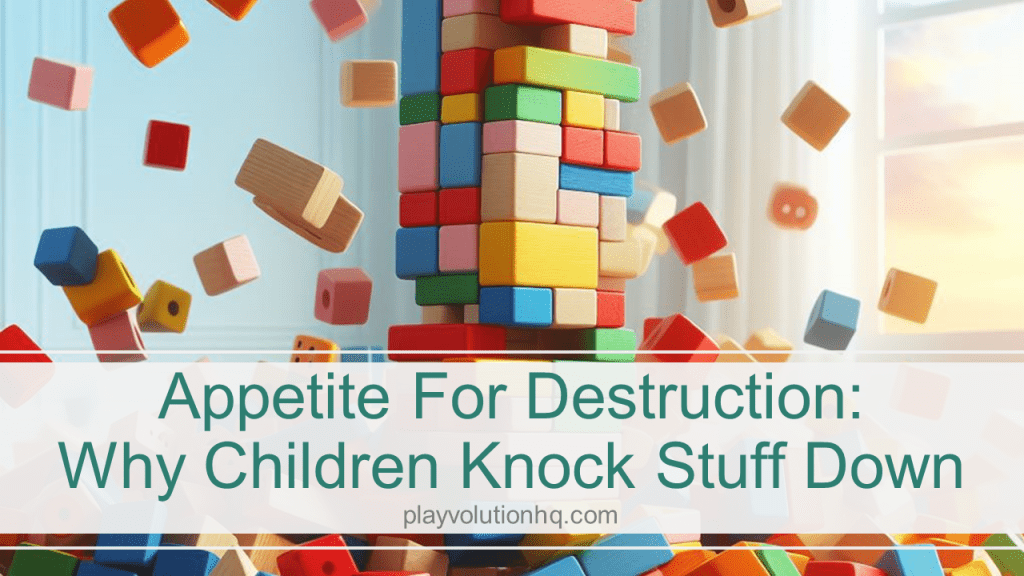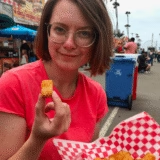
Young children are interested in destruction, and we should welcome it.
I had a conversation with a co-worker about bringing in some soft blocks to our two-year-old space: the children seemed to enjoy stacking and knocking over the blocks outside, and I wondered how they might interact with them in a different environment. My co-worker shrugged: “but all they do is knock stuff down,” they said. “That’s not really doing anything.” Probing further, they wanted to see them creating things: houses, or animals, or vehicles, or at least an answer to the question “What is it?”
Destruction is an act of creation, though: what was there is no longer, as it’s been replaced with something new. When a wildfire sweeps through a forest, the landscape is changed; a child knocks over a tower of blocks and now has a pile of them instead. Think, for a moment, about what you value most: is it a child’s exploration of materials, or is it a finished product?
Much like when we talk about process vs. product art, the same ideas can be applied to Magnatiles, sandcastles, or sticks – give them space to test out things, talk to them about their ideas, and provide them ample opportunities to revisit and rethink about what they’ve been doing. My coworker prioritized finished work; I prioritized the process of working. Another way to think of it is that they were interested in the noun (the block, the thing that was created), and I was interested in the verb (stacking, pushing, pulling, smashing.)
Approaching this from the more nerdy angle, I reminded my colleague that the laws of nature have to be experienced, not just talked about. If we want children to understand that every action has an equal and opposite reaction, we need to put them in charge of causing those reactions. We can, of course, connect much of these behaviors to schema theory, too – trajectory, anyone? – and the emotional response of destruction is also a huge factor for young children: the way an adult’s face scrunches up with frustration; the cries of “oh no!” as someone else’s fort of sheets comes tumbling down.
One of the simplest ways to instantly shift the power dynamic in any given situation is to break stuff: now, who’s in charge? Who has the attention now? (And if we know behavior to be communication, what might be being communicated when someone marches over and tears a picture off the wall?)
But I don’t LIKE it when they do that! I hear the frustration of many colleagues when little so-and-so goes over and, once again, dumps all of the Duplos on the floor. I know. I get it. Someone has to pick those up. Someone has to finish the dishes, make sure all of the diapers have been changed, fill out daily reports, and get the snack menu up for tomorrow; how can you possibly handle yet another thing to do?
Destruction Wrap-Up
The solution isn’t to ban destruction, it’s to anticipate it. When you think of knocking things down as something these children have to do, you’re more likely to be a little less tense about handling the aftermath of their destruction. Instead of “Ugh, you knocked it over again! Play nicely!” try, “Oh, you knocked it over again! What did you notice?” Yes, you might run behind sanitizing the toys, but you’ll gain a new perspective on what your children are up to and interested in.
Related Resources
Here are some related links you may find helpful:
Contribute content to Playvolution HQ
Brought to you by Explorations Early Learning
Browse Trainings

Post Author
Student, teacher.


Leave a Reply